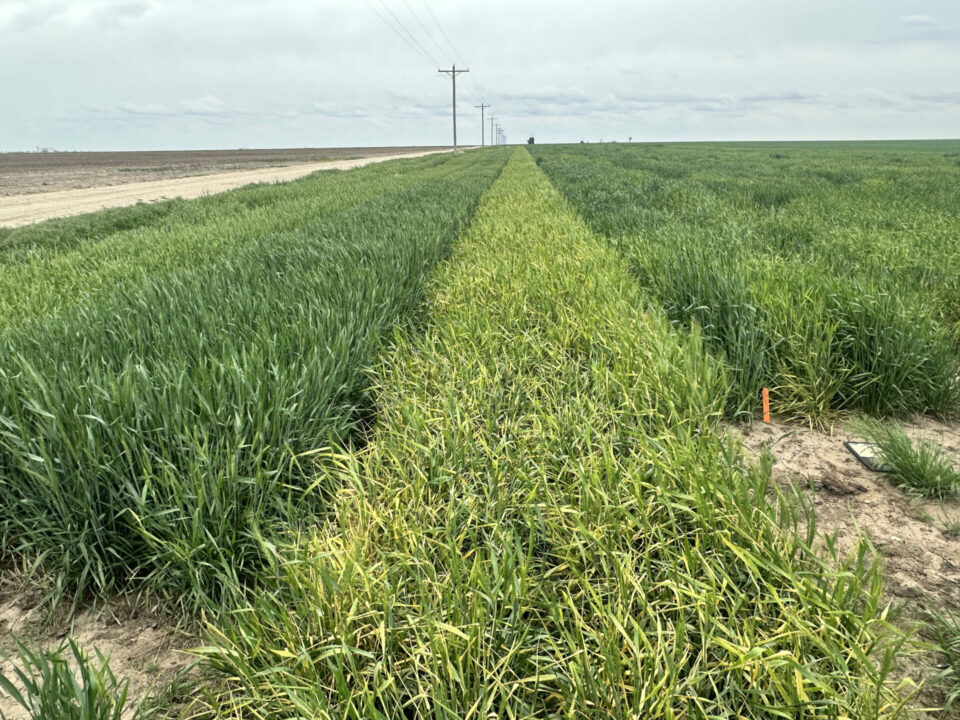By Vance Ehmke

If being $2/bushel below cost of production isn’t enough, now Kansas wheat farmers have what could be a very serious disease problem on their hands with wheat streak mosaic as well as Triticum mosaic virus. In worst cases, entire fields may be lost.
Dennis McNinch who farms in northern Ness County says his Whistler variety is really being clobbered and may not be worth cutting. He was going to have the field sprayed with a fungicide for leaf rust but cancelled the order because of the viral disease that is just now starting to show up.
He points out that there is probably a very strong difference between varieties in their resistance. “I’ve got the new KS Bill Snyder planted right beside the Whistler and it looks green as Ireland.”
Here on our farm in Lane County, I’ve seen fields that are solid yellow. I’d say those fields are going to be a total loss. In addition, I talked to a farmer in western Scott County, and he was also reporting a lot of wheat streak mosaic.
As we all know, once the plant is infected with the virus, there is nothing you can—there is nothing you can spray on the crop like a fungicide. And the penalty can be severe—it can range from a mild 10% loss on up to the entire crop. Too, the infections frequently occurred last fall when the wheat curl mite moved from neighboring fields of volunteer wheat to the newly planted crop. Often the symptoms don’t show up until the spring. The virus is easily controlled by simply killing volunteer wheat back in the fall. But some farmers don’t do that.
KSU southwestern Kansas agronomist Logan Simon, Garden City, has been getting a lot of calls about the disease. “We’re seeing it as far east as Kingman County in southcentral Kansas and from there all the way to Colorado.”
He says the disease is covering a very large area and with heavy severity. “Any variety that is susceptible to the mosaic virus is already showing signs of the infection. I’d expect yield losses ranging from 10% to 100%. If the entire flag leaf is already yellow, you’re probably looking at a total loss.”
Logan says there are likely at least two mosaic viruses involved—wheat streak mosaic as well as Triticum mosaic. The third mosaic or High Plains mosaic could also be a factor. He also says even if your fields aren’t presently showing signs of infection, you’re not out of the woods. “Last year we saw some very late infections that proved to be pretty severe. Presently, I’d say about 20% of the wheat fields are showing signs of infection, but that number could certainly expand with time.” ################
